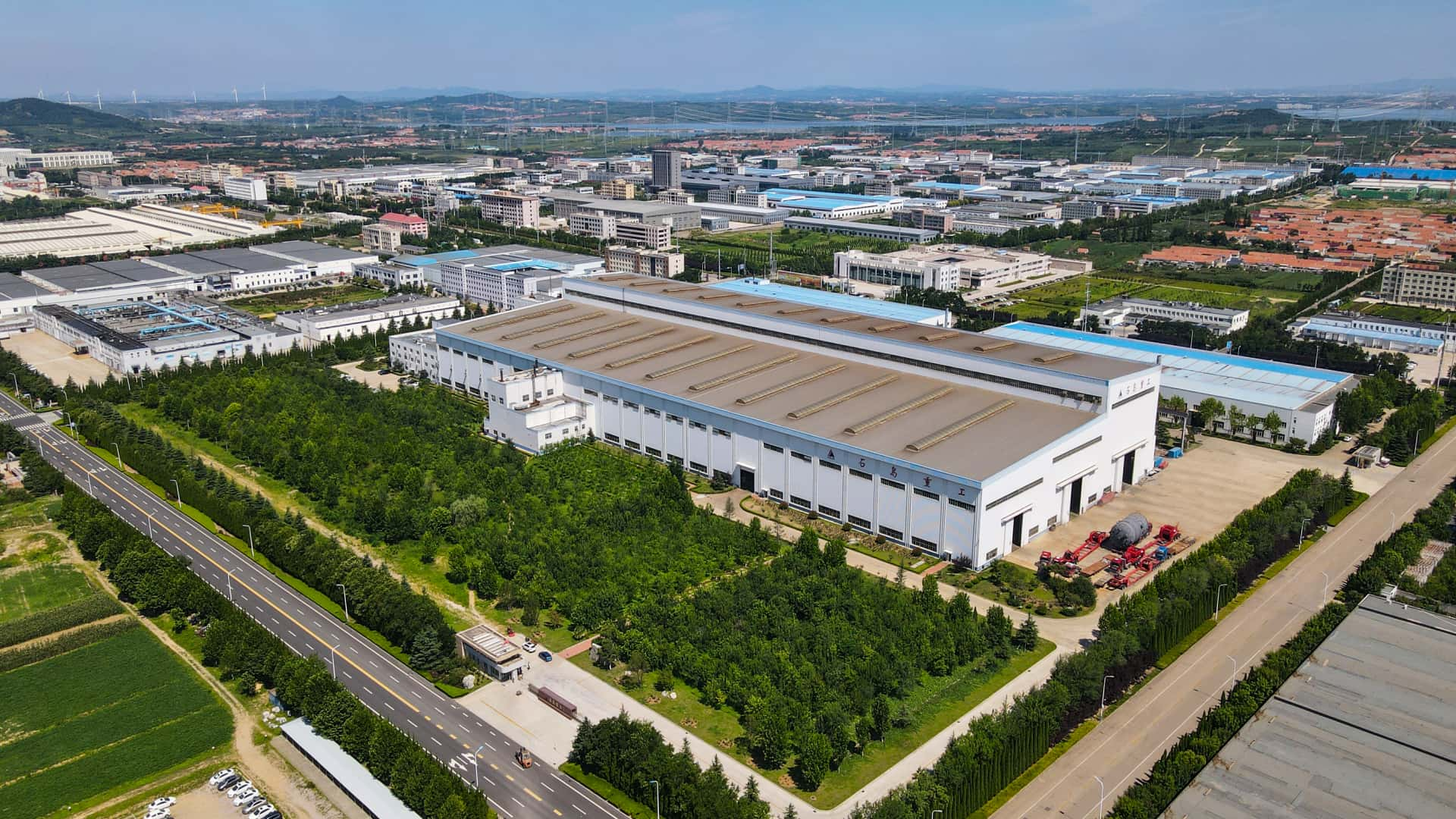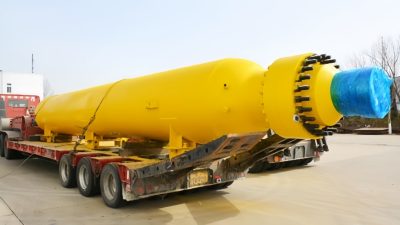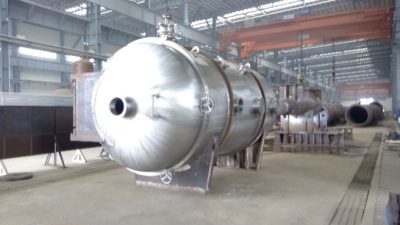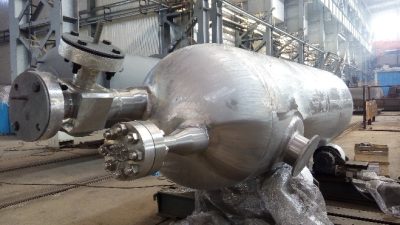Send Email
Call / WhatsApp Anytime
Send Email
Call / WhatsApp Anytime

Call / WhatsApp Anytime
In the aerospace sector, pressure vessels are not just mechanical shells—they are mission-critical systems enabling propulsion, life support, testing, and structural validation in environments where human safety, vacuum extremes, cryogenic conditions, and precise regulation are non-negotiable.
From wind tunnel blast chambers on Earth to cryogenic liquid oxygen tanks in orbit, pressure vessels must deliver exceptional strength-to-weight ratios, ultra-tight sealing, thermal compatibility, and compliance with rigorous aerospace standards such as ASME, ECSS, and NASA specifications.
This document provides the most detailed and structured breakdown of pressure vessel applications across the aerospace industry, covering real use cases from ground simulation to spaceflight operation.
Here are selected project cases demonstrating our capability in delivering pressure vessels for complex petrochemical units.



| Client | Equipment Name | Spec | Weight / Material |
|---|---|---|---|
| Beijing Aerospace Test Technology Research Institute | High-Pressure Liquid Oxygen Storage Tank | φ1200 × 8000 mm | 24.1T Forged S30408 (Cryogenic-Grade Stainless Steel) |
| Beijing Aerospace Yisen Wind Tunnel Engineering Technology Co., Ltd. | Vacuum Simulation Chamber | Internal Diameter: 2.4m Volume: 20m³ | 10.8T Austenitic Stainless Steel (Grade 304) |
| Institute of Mechanics, Chinese Academy of Sciences | Wind Tunnel Rupture Chamber | DN1600 × 115 × 10365 mm | 49.665T 20MnMoNbⅣ / 16MnⅢ |
During hypersonic and transonic flight simulation, aerodynamic shock waves and detonation effects must be safely absorbed and released. Wind tunnel blast chambers (or rupture chambers) are designed to contain and release this instantaneous energy surge under fully controlled pressure.
Hypersonic flow simulation test centers
Military-grade weapon payload aerodynamic testing
Supersonic aircraft inlet detonation simulation
Reusable shockwave diffusion chambers
Constructed using high-impact steels (e.g., Q370R, 15MnNiDR) or Inconel
Modular structure with venting flanges, rupture disks, and segmented shields
Designed to withstand sudden internal pressure spikes >10 MPa
Reinforced welds and bracing structures compliant with GJB & ASTM E290 standards
Liquid oxygen (LOX) is a primary oxidizer in rocket propulsion. LOX tanks serve as stationary or flight-mounted cryogenic pressure vessels, managing sub-zero, high-pressure conditions for sustained or staged burns.
LOX supply for launch vehicles (Falcon, Long March, Ariane)
Ground-based oxidizer storage at launchpads
Pressure feed systems for upper-stage separation
Built from aluminum alloys, 316L stainless steel, or titanium
Double-wall vacuum-insulated structure to prevent boil-off
Inner wall designed for thermal contraction and cryogenic cycling
Equipped with multi-stage pressure control valves, vent relief, and burst disk assemblies
Before launch, aerospace components and payloads must be tested in near-space conditions. Vacuum chambers simulate low-pressure, high-radiation, and thermal cycling environments for satellite, payload, and structural qualification.
Satellite thermal vacuum (TVAC) testing
Optical payload and solar panel space simulation
Outgassing test for space-grade materials
Launch vibration and thermal endurance trials
Cylindrical or rectangular chambers with ID 2m – 10m+, length >15m
Vacuum level: up to 10⁻⁶ torr
Built with 316L stainless steel or Inconel 625, designed for long-duration depressurization
Integrated with cryopanels, feedthroughs, instrumentation ports, and viewports
Tested per NASA-STD-7002, ECSS-E-ST-10-04C
Onboard spacecraft pressure vessels store propellants (e.g., hydrazine, MMH, UDMH) and pressurant gases like helium and xenon used in thrusters and attitude control systems (ACS).
GEO satellite maneuvering tanks
Deep-space electric propulsion xenon tanks
Reaction control system (RCS) fuel spheres
Commonly designed as Composite Overwrapped Pressure Vessels (COPVs)
Materials: titanium liner + carbon fiber overwrap
Ultra-light and high-pressure rated (>400 bar for xenon)
Built-in diaphragm or bladder for zero-G liquid management
In spacecraft, Environmental Control and Life Support Systems (ECLSS) rely heavily on compact and ultra-reliable pressure vessels for breathable air, CO₂ absorption, and water recovery systems.
Emergency oxygen cylinders (ISS, Orion, Tiangong)
Lithium hydroxide CO₂ scrubber canisters
Cabin pressure reservoirs for pressure equalization
Aerospace-grade aluminum or stainless steel
Hermetically sealed with quick-disconnect ports
Qualified through drop tests, leak checks, and cyclic fatigue tests
GSE pressure vessels support the launch system lifecycle by storing and delivering critical gases (LOX, LN₂, helium) and managing hazardous pressurized fluid transfer.
LOX/LH₂ ground storage for fueling
Helium pressurant ground bottles
Purge gas storage for launch pad safety systems
ASME Section VIII Div. 2 design
Skid-mounted or vertical installation
Equipped with integrated manifolds, pressure gauges, rupture disks, and remote fill lines
From the flame trenches of hypersonic tunnels to the silence of low Earth orbit, pressure vessels remain an indispensable pillar of aerospace mission success. Whether holding cryogenic fuel, maintaining cabin atmosphere, or simulating deep space vacuum, these vessels must combine mechanical excellence with absolute reliability.
Are you working on a launch vehicle, satellite, space station module, or test center?
We design and manufacture pressure vessels that meet NASA, ASME, ECSS, and MIL-STD specifications, ready for the skies—or beyond.
Why Choose Us?
Certified Safety, Reliable Quality, Custom-Engineered Pressure Vessels.
